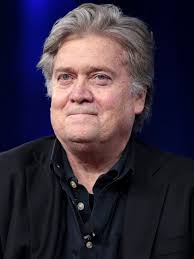



| Business-Managed Democracy » Culture » Social Media » Elections » Trump Campaign |
 Social media turned the US election into a battle over perception rather than one over ideology, one of emotions and passions rather than reason and truth. “Using the principles of reality TV and the power of Twitter, Trump was able to create the spectacle and almost immediately annotate it to an audience of fans”.
Social media turned the US election into a battle over perception rather than one over ideology, one of emotions and passions rather than reason and truth. “Using the principles of reality TV and the power of Twitter, Trump was able to create the spectacle and almost immediately annotate it to an audience of fans”.
During the presidential debates, Brad Parscale, a marketing entrepreneur, and the Trump campaign’s digital director, was ready with 400 pre-written Trump tweets to send them out on his behalf at key moments during the debate when Trump made particular points, for example accusations against Clinton.
Andy Wigmore, Leave.EU’s communications director, described one of Trump’s press conferences:
 Reference: Quoted in Carole Cadwalladr. , ‘Robert Mercer: The Big Data Billionaire Waging War on Mainstream Media.’ The Guardian. 26 February, 2017.
Reference: Quoted in Carole Cadwalladr. , ‘Robert Mercer: The Big Data Billionaire Waging War on Mainstream Media.’ The Guardian. 26 February, 2017.It was absolutely brilliant. I could see exactly what he was doing. There’s feedback going on constantly. That’s what you can do with artificial intelligence. You can measure every reaction to every word. He has a word room, where you fix key words. We did it. So with immigration, there are actually key words within that subject matter which people are concerned about. So when you are going to make a speech, it’s all about how can you use these trending words.
Trump’s digital campaign relied on a database they named Project Alamo and his team treated the campaign as they would a marketing campaign. It’s model, “Battleground Optimizer Path to Victory”, worked out which states were critical to obtaining the 270 electoral votes necessary to win.
Cambridge Analytica undertook “major digital targeting campaigns” for Donald Trump during the US elections. It was paid over $6 million for this work. Its database enabled Cambridge Analytica to find “persuadable” voters and target them according to their psychological profile and emotional triggers. “Cambridge Analytica could target people high in neuroticism, for example, with images of immigrants ‘swamping’ the country.”
 Reference: New York Times reporters Nicholas Confessore and Danny Hakim quoted in Sue Halpern, ‘How He Used Facebook to Win.' The New York Review of Books, 8 June 2017.
Reference: New York Times reporters Nicholas Confessore and Danny Hakim quoted in Sue Halpern, ‘How He Used Facebook to Win.' The New York Review of Books, 8 June 2017.A voter deemed neurotic might be shown a gun-rights commercial featuring burglars breaking into a home, rather than a defense of the Second Amendment; political ads warning of the dangers posed by the Islamic State could be targeted directly at voters prone to anxiety….
Alternatively it could target Democrat voters and encourage them to become disengaged to the extent that they didn’t bother voting. This involved a three prong approach, according to a senior campaign official:
 Reference: Sue Halpern, ‘How He Used Facebook to Win.' The New York Review of Books, 8 June 2017.
Reference: Sue Halpern, ‘How He Used Facebook to Win.' The New York Review of Books, 8 June 2017.
One targeted idealistic white liberals—primarily Bernie Sanders’s supporters [using issues such as Clinton’s support for Trans-Pacific Partnership free trade deal]; another was aimed at young women—hence the procession of women who claimed to have been sexually assaulted by Bill Clinton and harassed by the candidate herself; and a third went after African-Americans in urban centers where Democrats traditionally have had high voter turnout. One dark post featured a South Park–like animation narrated by Hillary Clinton, using her 1996 remarks about President Bill Clinton’s anti-crime initiative in which she called certain young black men “super predators” who had to be brought “to heel.”
It seems this tactic was successful as Democratic voter turnout was weak in battle ground states and this helped Trump to win. One longtime Trump adviser wrote about how the campaign "geo-targeted" cities with a fake message that Bill Clinton had fathered a child out of wedlock". The message further narrowed down the target audience “based on preferences in music, age range, black culture, and other urban interests.”
Early in the primaries the Trump campaign spent all its digital campaign budget, $2 million, on Facebook advertising. Digital Director, Brad Parscale,
 Reference: Sue Halpern, ‘How He Used Facebook to Win.' The New York Review of Books, 8 June 2017.
Reference: Sue Halpern, ‘How He Used Facebook to Win.' The New York Review of Books, 8 June 2017.then uploaded all known Trump supporters into the Facebook advertising platform and, using a Facebook tool called Custom Audiences from Customer Lists, matched actual supporters with their virtual doppelgangers and then, using another Facebook tool, parsed them by race, ethnicity, gender, location, and other identities and affinities. From there he used Facebook’s Lookalike Audiences tool to find people with interests and qualities similar to those of his original cohort and developed ads based on those characteristics, which he tested using Facebook’s Brand Lift surveys.
That was for starters. His budget increased to $70 million a month for digital advertising much of it on Facebook with the aim of building “fervent Trump supporters”. Pascale built up a list of Trump supporters that were beyond the Party’s reach. These supporters, categorised by Cambridge Analytica as “disenfranchised new Republicans” were “younger, more populist and rural—and also angry, active, and fiercely loyal to Trump”. With them, Pascale hoped to “own the future of the Republican party”.
Facebook was a particularly attractive venue because it was relatively cheap with massive audience coverage, and the capacity to do fast tests of many advertisements.
 Reference: Issie Lapowski, Wired, quoted in Sue Halpern, ‘How He Used Facebook to Win.' The New York Review of Books, 8 June 2017.
Reference: Issie Lapowski, Wired, quoted in Sue Halpern, ‘How He Used Facebook to Win.' The New York Review of Books, 8 June 2017.On any given day…the campaign was running 40,000 to 50,000 variants of its ads, testing how they performed in different formats, with subtitles and without, and static versus video, among other small differences. On the day of the third presidential debate in October, the team ran 175,000 variations.
To do this they used Facebook’s “dark posts” which cannot be seen by friends, only the recipient. Dark posts were also used for negative ads attacking Hilary Clinton, so that they “flew below the public radar”.
In this way, Trump did not present a single agenda, but rather presented different agendas to different audiences according to what their research told them would appeal to each audience. And the campaign was able to work out which audiences would count most in the actual election vote: “the digital team identified 13.5 million persuadable voters in sixteen battleground states, and modeled which combinations of those voters would yield the winning number… Once the Battleground Optimizer Path to Victory model took account of this cohort, and showed that the ones who lived in Rust Belt states had the most likely chance of delivering the presidency to Trump, Parscale’s digital team focused all its resources in those last few weeks on these voters.”
So although Clinton got the most votes, Trump got the ones that mattered. “What our Facebook president has discovered is that it actually pays only to please some of the people some of the time. The rest simply don’t count.”
The Trump digital advertising budget was also spent on Twitter and Snapchat and other social media. Facebook and other social media corporations in turn donated hundreds of millions to Trump’s campaign.
 Reference: Sue Halpern, ‘How He Used Facebook to Win.' The New York Review of Books, 8 June 2017.
Reference: Sue Halpern, ‘How He Used Facebook to Win.' The New York Review of Books, 8 June 2017.Trump’s digital team was also aided by the candidate’s unbridled use of Twitter, by WikiLeaks, by fake news generators like Breitbart, and by an army of so-called “Twitter bots,” automated Twitter accounts—many of which are thought to have emanated from Russia and at least one thousand of which the neo-Nazi website Daily Stormer claimed to have created. Together, all this sent a river of pro-Trump and anti-Clinton messages coursing into cyberspace, giving the Trump campaign a continually self-reinforcing narrative.
 After helping Trump get elected, Cambridge Analytica was awarded contracts in the Pentagon and the US state department. Steve Bannon, a former vice-president of Cambridge Analytica and editor of Breitbart News, helped fund the Trump campaign and became one of Donald Trump’s key advisers in the White House.
After helping Trump get elected, Cambridge Analytica was awarded contracts in the Pentagon and the US state department. Steve Bannon, a former vice-president of Cambridge Analytica and editor of Breitbart News, helped fund the Trump campaign and became one of Donald Trump’s key advisers in the White House.
 Reference: Max Kutner. ‘Meet Robert Mercer, the Mysterious Billionaire Benefactor of Breitbart.' Newsweek, 21 November 2016.
Reference: Max Kutner. ‘Meet Robert Mercer, the Mysterious Billionaire Benefactor of Breitbart.' Newsweek, 21 November 2016.With Rebekah Mercer, Conway and Bossie on Trump’s transition team, and Bannon in a top administration role, the Mercer family’s influence now extends deep into the White House. This could be seen as contrary to some of Trump’s campaign rhetoric, such as when he vowed “to fight for every person in this country who believes government should serve the PEOPLE—not the donors,” called super PACs “total scams” and “very corrupt,” and slammed his opponent for receiving money from “hedge funders.” In January, he even criticized Ted Cruz for receiving “$11M from a NY hedge fund mogul,” precisely the amount Mercer had given Make America Number 1 at that point in its previous iteration.
Apart from his ideological reasons to oppose Hilary Clinton’s presidential bid, Robert Mercer had vested interests since she was proposing to impose a tax on high-frequency trading, a practice of Mercer’s company Renaissance Technologies. The Urban-Brookings Tax Policy Center "estimated that such a tax could cost finance companies $185 billion over 10 years”.
© 2018 Sharon Beder
http://www.herinst.org/BusinessManagedDemocracy/culture/socialmedia/2016.html
